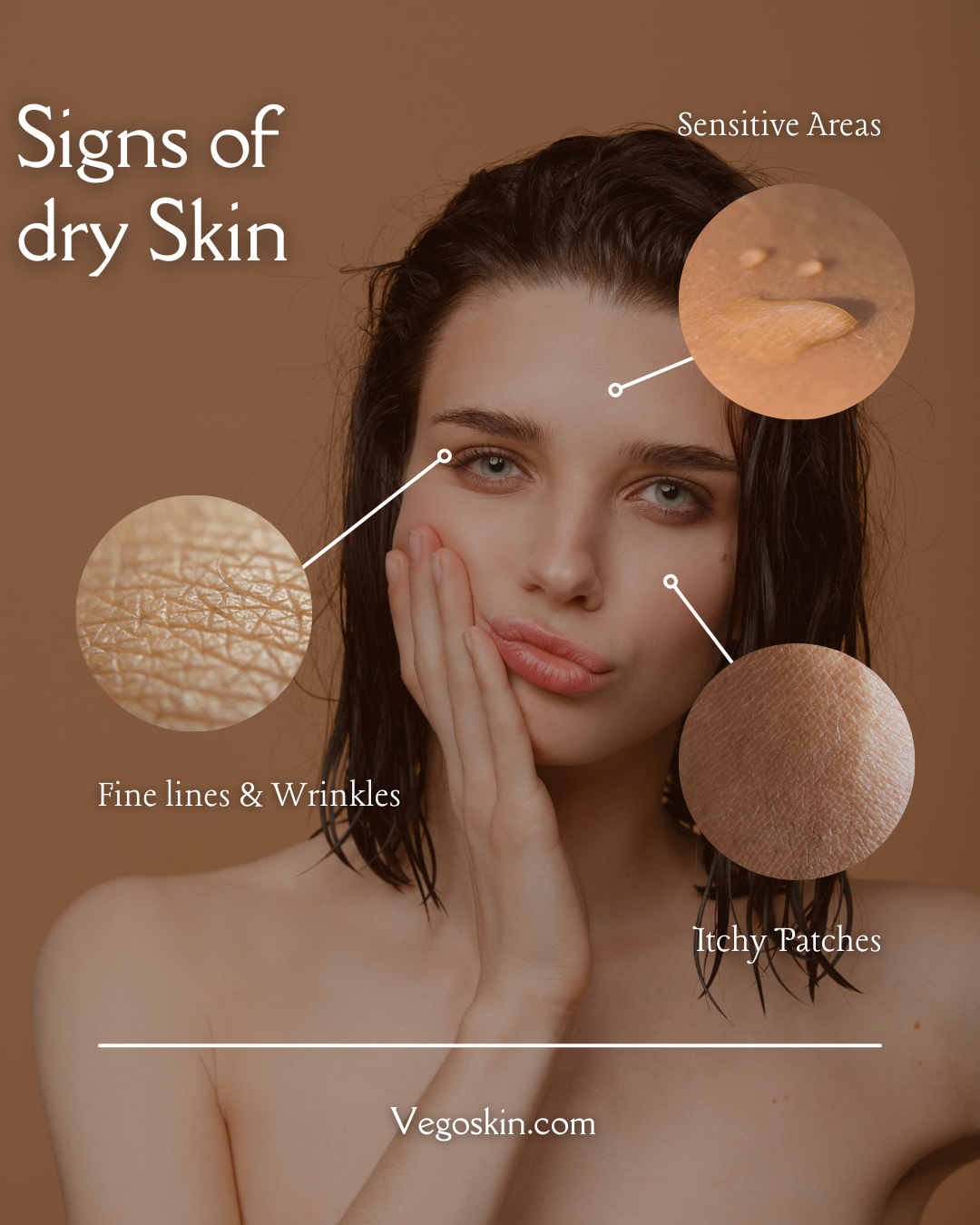Normal Skin Myths Debunked: Is Your Skin Really ‘Normal’?
Regarding skincare, the term “normal skin” gets thrown around a lot. But what does it mean? Is there such a thing as truly “normal” skin, or is it just a catch-all term that oversimplifies the complexity of our skin? In this article, we’re diving deep into the topic of Normal Skin Myths Debunked: Is Your Skin Really ‘Normal’? to separate fact from fiction. We’ll explore common misconceptions, provide science-backed insights, and offer practical tips for understanding your skin type. Along the way, we’ll link to trusted resources to help you make informed decisions about your skincare routine.
What Is “Normal” Skin, Anyway?
Normal skin is often described as skin that’s neither oily nor dry, with minimal blemishes and a smooth texture. Sounds perfect, right? But here’s the catch: very few people have skin that fits this idealized description all the time. Skin is dynamic, influenced by factors like weather, hormones, diet, stress, and even the products you use. According to the American Academy of Dermatology, skin types are generally categorized as normal, oily, dry, combination, or sensitive, but these labels don’t tell the whole story.
One of the biggest myths about normal skin is that it’s problem-free. In reality, even people with so-called normal skin can experience occasional breakouts, dryness, or sensitivity. The idea of “normal” can set unrealistic expectations, making you feel like your skin is somehow failing if it doesn’t look flawless 24/7. Let’s debunk some of these myths and get to the truth about Normal Skin Myths Debunked: Is Your Skin Really ‘Normal’?
Myth 1: Normal Skin Doesn’t Need a Skincare Routine
A common misconception is that normal skin doesn’t require much maintenance. If your skin looks balanced, why bother with a complicated routine? This couldn’t be further from the truth. Every skin type, including normal, benefits from consistent care to maintain its health and protect it from environmental damage.
The Truth:
Normal skin still needs cleansing, moisturizing, and sun protection. Without proper care, it can become dry, oily, or irritated over time. For example, skipping sunscreen can lead to premature aging and increase the risk of skin cancer, as noted by the Skin Cancer Foundation. A basic routine for normal skin might include:
- Cleansing: Use a gentle cleanser twice daily to remove dirt, oil, and impurities.
- Moisturizing: Even balanced skin needs hydration to stay soft and supple.
- Sunscreen: Apply broad-spectrum SPF 30 or higher every morning, even on cloudy days.
By sticking to these basics, you can keep your skin in top shape. If you’re unsure where to start, check out DermNet NZ for detailed guides on building a skincare routine tailored to your needs.
Myth 2: Normal Skin Is the Same for Everyone
Another myth in Normal Skin Myths Debunked: Is Your Skin Really ‘Normal’? is that normal skin looks and behaves the same across all individuals. In reality, normal skin can vary widely based on genetics, age, and lifestyle. What’s normal for one person might not be normal for another.
The Truth:
Your skin is as unique as your fingerprint. For instance, someone with normal skin in their 20s might notice changes in their 30s due to hormonal shifts or environmental factors. Similarly, cultural and geographic differences play a role. People living in humid climates may have different skin concerns than those in dry, arid regions. According to a study published in the Journal of Clinical and Aesthetic Dermatology, skin barrier function and hydration levels can differ significantly based on ethnicity and climate.
To understand your skin, pay attention to how it feels and reacts. Does it get tight after washing? Do you notice the shine by midday? These clues can help you fine-tune your routine, even if your skin falls under the “normal” category.
Myth 3: Normal Skin Doesn’t Change Over Time
Many people assume that if they have normal skin now, it’ll stay that way forever. This myth can lead to complacency, leaving you unprepared for shifts in your skin’s behavior.
The Truth:
Skin changes throughout your life. Aging, hormonal fluctuations, and lifestyle factors like stress or diet can alter your skin’s texture and needs. For example, as we age, our skin produces less oil, which can make even normal skin feel drier. The National Institute on Aging explains that skin loses elasticity and moisture over time, making hydration and anti-aging products more important as you get older.
To keep your skin balanced, be ready to adapt your routine. In your 20s, a lightweight moisturizer might suffice, but in your 40s, you may need richer creams or serums with ingredients like hyaluronic acid or retinol. Regularly reassess your skin’s needs to ensure it stays healthy and vibrant.
Myth 4: You Don’t Need to Worry About Ingredients
If your skin is normal, you might think you can use any product without consequences. This myth can lead to irritation or breakouts if you’re not careful about what you apply.
The Truth:
Even normal skin can react to harsh ingredients like alcohol, fragrances, or aggressive exfoliants. Reading labels and choosing products with gentle, effective ingredients is key. For instance, ingredients like niacinamide and ceramides are great for maintaining a healthy skin barrier, as highlighted by Paula’s Choice. On the other hand, overusing products with strong actives like salicylic acid or retinoids can disrupt your skin’s balance.
A good rule of thumb is to patch-test new products on a small area of your skin before applying them to your face. This simple step can save you from unexpected reactions and keep your skin happy.
Myth 5: Normal Skin Is Immune to Sensitivity
Another misconception in Normal Skin Myths Debunked: Is Your Skin Really ‘Normal’? is that normal skin is inherently tough and can handle anything. While normal skin may be less prone to issues, it’s not invincible.
The Truth:
Normal skin can become sensitive due to external factors like pollution, harsh weather, or improper product use. For example, over-exfoliating can weaken your skin barrier, leading to redness or irritation. The Cleveland Clinic notes that environmental stressors can trigger sensitivity in any skin type, including normal.
To protect your skin, avoid overdoing it with scrubs or chemical exfoliants. Stick to exfoliating 1-2 times per week and use soothing ingredients like aloe vera or chamomile if your skin feels irritated. If sensitivity persists, consult a dermatologist to rule out underlying conditions like rosacea or eczema.
Myth 6: Normal Skin Doesn’t Need Professional Care
If your skin seems fine, you might think dermatologist visits or professional treatments are unnecessary. This myth can prevent you from catching potential issues early.
The Truth:
Regular check-ins with a dermatologist can help you maintain healthy skin and catch problems before they escalate. For example, a dermatologist can assess your skin for early signs of sun damage or moles that need monitoring. The American Academy of Dermatology recommends annual skin checks, especially if you have a family history of skin cancer.
Professional treatments like facials or chemical peels can also enhance your skin’s glow, even if it’s already normal. Just be sure to choose treatments suited to your skin type and avoid anything too aggressive.
Practical Tips for Caring for Normal Skin
Now that we’ve debunked some myths, let’s talk about how to care for your skin if it falls into the normal category. Here are some practical tips to keep it looking its best:
- Stick to a Simple Routine: Cleanse, moisturize, and apply sunscreen daily. Add a gentle exfoliant or serum as needed, but don’t overcomplicate things.
- Stay Hydrated: Drink plenty of water and use hydrating products to maintain your skin’s moisture balance. The Mayo Clinic emphasizes the importance of hydration for overall skin health.
- Protect Against UV Rays: Sunscreen is non-negotiable, even for normal skin. Choose a lightweight, non-comedogenic formula for daily use.
- Listen to Your Skin: If your skin feels off, adjust your routine. For example, switch to a richer moisturizer in winter or a lighter one in summer.
- Eat a Balanced Diet: Nutrient-rich foods like fruits, vegetables, and healthy fats support skin health. Check out Healthline for diet tips that benefit your skin.
Why Understanding Your Skin Matters
In the journey of Normal Skin Myths Debunked: Is Your Skin Really ‘Normal’?, the key takeaway is that “normal” is a starting point, not a destination. Your skin is a living organ that reflects your overall health and environment. By debunking these myths, we hope you feel empowered to care for your skin in a way that’s tailored to its unique needs.
Rather than chasing an unattainable ideal of “normal,” focus on what makes your skin feel healthy and radiant. Whether it’s tweaking your routine, consulting a dermatologist, or exploring new products, small changes can make a big difference. For more personalized advice, sites like WebMD offer tools to help you assess your skin type and find the right products.
Conclusion
The idea of normal skin is riddled with myths that can mislead even the savviest skincare enthusiasts. From the belief that normal skin doesn’t need care to the assumption that it’s the same for everyone, these misconceptions can hold you back from achieving your best skin. By exploring Normal Skin Myths Debunked: Is Your Skin Really ‘Normal’?, we’ve uncovered the truth: normal skin is diverse, dynamic, and deserving of attention.
Take the time to understand your skin’s unique needs and build a routine that supports its health. With the right care, your skin can thrive—no matter how “normal” it is. For more skincare tips and resources, visit trusted sites like Allure or Byrdie to stay informed and inspired.



